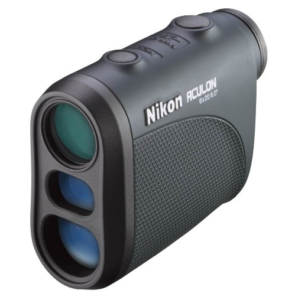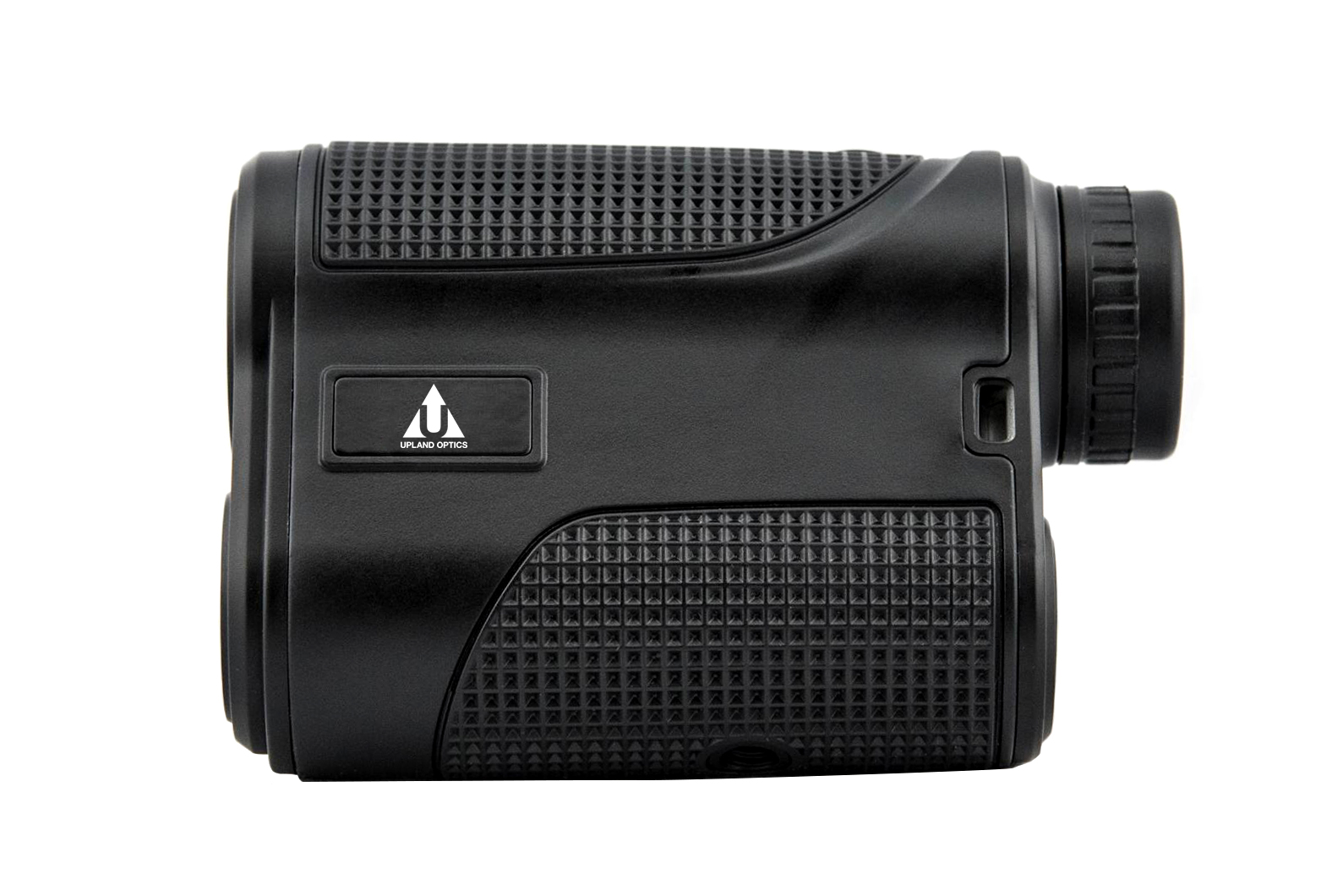
The Upland Optics Perception 1000 is our favorite rangefinder. Click the picture above to learn more.
Rangefinders belong to an innovative class of technology that has been evolving over the last century. These handheld gadgets are useful in a variety of situations. The system itself arose almost one hundred years ago, primarily adapted alongside cameras. In recent decades, these helpful tools have been utilized for solo performance in a variety of fields. They offer great benefits for hunting, archery, and golf.
This technical guide explores the vital specifications of these revolutionary devices. Before detailing the essential characteristics of a sound rangefinder, we will present the best ones available on the current market. While the functional mechanics remain relatively identical, minor modifications allow these machines to be employed for a variety of different purposes.
The Best Rangefinders for Hunting
Hunters use rangefinders to gauge the distance between themselves and their prey. Once they know how far away the prey is, they can make a more accurate shot. A rangefinder works exceptionally well when paired with a rifle scope. Here are the best gadgets for an accurate shot:
1. Upland Optics Perception 1000 Laser Rangefinder
Upland Optics is the brand we recommend the most for hunters, and their all-new rangefinder is a perfect example of why. Simple and effective, this device is built to be rugged enough to handle the extreme conditions that hunters often face.
With an effective range of 1000 yards, this rangefinder will be dialed in on distances well outside the effective range of most hunters. You will always know exactly how far of a shot you are taking or how much distance you have to cover to get within range.
Lightweight and portable, the device isn’t even noticeable when added to your other heavy gear. I personally carry it on my chest attached to my binocular harness, making it very easy to access quickly. Click here to see the current price.
2. Bushnell Michael Waddell Bone Collector Edition 4x 21mm Laser Rangefinder
For an authentic hunting experience, experts recommend this rugged rangefinder. Bushnell machines always carry a proud legacy, but this Collector’s Edition release is especially unique. The camouflage exterior lends itself to a gritty outdoor lifestyle. This tough appeal is not just for show, either; in fact, this boisterous device is meant to handle extreme environmental conditions. One of the special attributes of this model is its rainproof shell. The compact design also makes it extra portable.
This gadget simplifies the hunting experience more than any other machine. All functions have been condensed to a single-button operation. With a magnification versus objective lens ratio of 4X21mm, this viewer can spot anything between 10 and 600 yards. Accuracy is always within three feet.
The primary asset of this rangefinder comes in the form of advanced low light abilities. It is known to deliver unprecedented levels of bright crystalline optics in near darkness. Click here to see the current price.
The Best Rangefinders for Archery
Archers use rangefinders to hone their accuracy while developing an understanding for environmental factors. To make every arrow count, look into one of the following machines:
1. Nikon Arrow ID 3000 Bowhunting Laser Rangefinder
Archery aficionados swear by this premiere rangefinder from Nikon. All measurements are very specific. The increments are given for every 0.1 yards or meters. The gadget comes with First Target Priority Mode. This is the main selling point, mainly because it can be used to aim onto really small objects. It is designed to read thin fence posts 100 yards away. The mapping interface also does not falter with close range distances down to 5 yards. The objective diameter is an ideal 21mm.
This machine is durably suited for tough conditions including fog and rain. The 89 degree angular range is truly impressive, and it enables straight shots up and down. An 18.3mm eye relief zone enshrines true comfort. The CR2 lithium battery promises reliable use for extended periods of time. It is water resistant and rainproof, so you don’t have to worry about the elements. Click here to see the current price.
2. Bushnell G-Force 1300 ARC Laser Rangefinder
To launch arrows a greater distance than the usual hundred yards, archers flock to this notorious Bushnell creation. This is probably the most accurate design currently available in the field. It extends its reach up to 1,300 yards, and the precision is on the dot. The units are given for every 1/10 yards. For the nearest 475 feet, shots are guaranteed to land within 1/2 yard without human adjustments. Everything beyond that marker still promises a single yard range of accuracy.
The legendary 6x optics are brilliantly enlivened by Vivid Display Technology. This approach severely boosts clarity and contrast. Another specialized feature that has been built into this machine is Variable Sight-In (VSI).
There are three different modes available for the bow and arrow, and each one is sincerely advantageous. Bulls-Eye mode emphasizes sharpshooting, while Brush and Scan focus on panoramic aiming practices. Finally, the machine possesses a powerful protocol known as “Extreme. Speed. Precision.” This software is the most renowned rangefinder mainframe being offered to casual customers today. This stylish piece of machinery can be further enhanced by a tripod, which can be linked into its factory-installed mounting chamber. Click here to see the current price.
3. Simmons LRF 600 Laser Rangefinder
For archers just getting acquainted with the sport, it is impossible to go wrong with this Simmons model. It combines all of the basics at an astonishingly affordable price.
 This release earns rave reviews non-stop, especially since this rangefinder brand has a name for swift precision. The magnification of 4x is more than enough for beginners. A tightly compacted vertical layout makes this gadget a breeze to bring anywhere.
This release earns rave reviews non-stop, especially since this rangefinder brand has a name for swift precision. The magnification of 4x is more than enough for beginners. A tightly compacted vertical layout makes this gadget a breeze to bring anywhere.
With a capacity in between 5 and 600 yards, this bold device contains LCD visuals within the view itself. The optics are exceptionally bright and crystal clear, which is surprising for this price range. It is also housed with a superior casing that is resistant to harsh weather situations. Overall, this machine boasts accessibility and efficiency. Click here to check the current price.
The Best Rangefinders for Bow Hunting
When archery is applied in the field, the stakes are raised even higher. A dependable rangefinder must be on-hand to guarantee a successful experience. This surveillance equipment instills safety through awareness, and it allows perfect opportunities for exact kills. Here are the most trustworthy tools for these rigorous hunters:
1. Bushnell G-Force DX ARC 6x 21mm Laser Rangefinder
For something a little more powerful than the previous entry, check out this upgrade, which is also from Bushnell. Angle displays are fully tackled by an automated inclinometer. The magnification reaches a whopping 6x, and MOA is fully integrated.
This release also contains Bulls-eye, Scan, and Brush, but all specifications are extra detailed. The exterior also boasts the benefit of being handsomely decorated with symmetrical layouts, anti-slip grips and an iconic logo. A lithium ion battery is included, so this product can be used immediately. It is economically savvy and ergonomically sound.
This specific model also conveniently includes a dual purpose interface that properly accommodates most guns. Click here to check the current price.
2. Bushnell Elite 1600 Arc Rangefinder 7×26
Here is perhaps the most extraordinary tool bow hunters have available. Once again, this rangefinder ditches the traditional monocular approach to enshrine more accuracy, focus and distance. These benevolent binoculars can detect activity up to 1,760 feet away.
The rangefinder itself is an Angle Range Compensation (ARC). This revolutionary piece is attached alongside a 96×48 Pixel Matrix Display. Aesthetics blend with functionality, and the PC-3 Phase Corrective Coating is dazzling on both counts. This machine also contains state of the art BaK-4 Prisms to instill total sharpness and crispness for images.
Because the conjoined reader retains a minimum of 80% light, it can be used in several dim environments. This light retention rate leads the entire rangefinder industry! Click here to check the current price.
The Best Rangefinders for Golf
To pick the right golf club before every stroke, wise players must take several conditions into account. Luckily, a rangefinder can do most of the measuring work! Here are our top recommendations:
1. Bushnell Tour V4 Jolt Golf Laser Rangefinder
For a truly well-rounded golfing experience, it is hard to top the state-of-the-art equipment that is featured in this mainstay from Bushnell. This is the most popular tool of choice for golfers around the world. Its stylish contour is outfitted with a stellar 24mm objective alongside 5x magnification.
This device can precisely calculate ranges up to 1,000 yards, and its minimum distance is a mere 10 yards. With the combo of PinSeeker with Jolt, players can estimate flags within a single yard of accuracy up to a total of 300.
The laser is top-notch and completely safe. A sturdy carrying case is provided, and the 3-Volt battery is a standard inclusion. This design features an ergonomic structure that has one of the most stable grips available. A generous two year warranty is granted, and it is legal for official tournaments. Click here to check the current price.
2. Leupold GX-3i2 Series Digital Rangefinder
If accuracy is your top concern, then check out Leupold’s signature rangefinder. With Prism Lock, it is possible to precisely locate any pin from a distance. Quickness is also a prominent feature of this brand. They often deliver measurements after the very first target return.
 Anyone who plays golf in adverse environmental conditions will want to consider this rangefinder based on its trademark Fog Mode. This feature detects all vital surroundings regardless of environmental conditions or changes in topography.
Anyone who plays golf in adverse environmental conditions will want to consider this rangefinder based on its trademark Fog Mode. This feature detects all vital surroundings regardless of environmental conditions or changes in topography.
This sleek device boasts refined technical specifications, and its interface is astonishingly accessible. The commands are all very intuitive; plus, it automatically beeps and freezes upon recognizing a properly outfitted flag stick. The grip is suited for intense conditions and the laser is truly beyond comparison. It comes housed in a fine bag that is complete with a protective strap. Click here to check the current price.
3. TecTecTec! VPRO1 Rangefinder
For a dynamic approach to golfing, it is difficult to beat the simplified technology of TecTecTec!. Crystal clear imagery is a focal point of this gadget, and it is embedded with 6x magnification. Every shot will be within a one-yard accuracy zone up to 540 yards.
This tool can completely replace binoculars. Its optic system is a stand-out in today’s industry, especially since it showcases the most evolved digital circuit design currently possible. For golf amateurs, this may be the prime choice.
The key to this item’s innovative success lies in its three unique modes. The First Target Priority Mode simply measures distance in regards to the nearest object. Distant Target Priority does the opposite by seeking the farthest object. All of the essential visual data is streamlined immensely, and the view makes it possible to gauge exactly where all hazards are lurking with Scan Mode.
Once you have picked out a rangefinder to take with you on the golf course, check out this awesome tutorial on how to use it effectively:
The Best Rangefinders for the Money
On a financial scale, rangefinders can be costly. Luckily, their powers are available in several affordable variations. For the penny pinchers, this list of inexpensive devices will be invaluable:
Here is a nifty device that is the perfect mix of functional and affordable. It looks prototypical, but it is actually capable of viewing up to 1,000 yards. It has a field of view that cuts off at 325ft, however, the viewing angle is limited to 6 degrees.
This is a laser intended for use primarily by hunters. It aims to capture mobility with refined accuracy. At a mere 5 ounces, it is also one of the lightest rangefinders in production. It is also outfitted with single-button mechanics for immediate comprehension and use. In terms of objective lens diameter, buyers can look forward to a respectable ratio of 23 mm / 0.91″.
On a side note, the cubic shape is exclusive to the Redfield line. These futuristic devices disguise themselves with retro appeal. Click here to check the current price.
So, how did a $700 rangefinder end up on this list of economically oriented selections? Well, it is because the value is still out of this world. With limitless potential in a 2,00 yard range, this model receives flawless reviews from plenty of customers and critics alike.
The plastic exterior is reinforced with an advanced carbon treatment to ingrain as well as an indestructible surface. The bold black finish is simultaneously suave and purposeful. It also comes with special lenses that received a rare AquaDura treatment. This product comes with several effective ballistic modes and it can be applied in endless fields.
If you are still not convinced, you may just have to check it out for yourself. Afterwards, there will be no turning back. These are the kind of clear optics for which you typically would have to spend thousands of dollars. Click here to check the current price.
The Best Rangefinders for Under $200
Here are some more affordable rangefinders. These products condense all of the vital elements into a compact product that can be mass produced. The rangefinders listed here are suitable for curious hunters and first-timers.
1. Simmons LRF 600 Tilt Intelligence laser Rangefinder
For being sold at such a low price, this model is still a step up from the standard version. Priced under $150, this grand device flaunts intuitive Tilt Intelligence. This interface rapidly calculates True Horizontal Distance.
All modes of use can be simplified to one button. The carrying case is surprisingly slick for being an automatic add-on accessory. With 4x magnification and 600 yards of range, the LCD in-view picture is stunningly clear every time. It has the welcome bonus of being bright and weather-resistant.
While this model is ideal for golf, it can also be useful for archers and bow hunters. Those who need extra ballistic controls may need to look elsewhere. Click here to check the current price.
2. SA Sports 7.26 Dragon Eyez 1500 Yard Rangefinder
This stellar Dragon Eyez release is currently being offered at $187. This price is unbelievable, especially considering the maximum range of 1,500 yards. Of course, this is with the implementation of an exclusive reflective surface, which can be subject to shutter speeds. Luckily, it also has an uninterruptible standard field of view that extends to an even 1,000 yards.
Rifle owners will fall in love with this mighty machine. Its astute measurements can be used to line up the perfect shot time and time again. Prize caribou will have no chance escaping the hunter that confidently utilizes this tool.
The 25mm lens is pretty big, and it comes with a fine cloth for long-term preservation. A lanyard and case are also provided for customer convenience. Finally, the LCD display is cutting-edge! Click here to check the current price.
The Best Rangefinders for Under $500
For a little more cash, you can get some serious bells and whistles. Here are some of the best rangefinders available within a more reasonable price limit:
1. Vortex Optics Ranger 1000 with Horizontal Component Distance Rangefinder RRF-101
This is one superb piece of technology right here! Vortex has crammed a ton of special amenities into this $380 model. It has a regal rubber exterior that protects from heavy impact while simultaneously allowing for a seriously unrelenting grip. Each one of the lenses is coated to enshrine anti-reflective powers, which leads to a wonderfully high level of brightness during use.
 The O-ring instills one of the best moisture prevention methods possible. This tight seal completely combats all interference from dust and debris. It is also programmed to fully prevent moisture contamination. These machines are known to emphasize a streamlined diopter, which refers to the curvature of its interior mirroring. Thus, focus is crystal clear no matter the occasion. Click here to check the current price.
The O-ring instills one of the best moisture prevention methods possible. This tight seal completely combats all interference from dust and debris. It is also programmed to fully prevent moisture contamination. These machines are known to emphasize a streamlined diopter, which refers to the curvature of its interior mirroring. Thus, focus is crystal clear no matter the occasion. Click here to check the current price.
2. Nikon 8381 Laser Forestry Pro Rangefinder
This is the rangefinder that professionals demand! At just under $400, it factors in every possible measurement of distance. It can keep track of complex elements including vertical separation, horizontal distance, angulations, and elevation.
It has two distinct modes to toggle between priority detections. The striking yellow surface represents true industry savvy. The module contains three separate units and users can freely switch between yards, meters, and feet. In the end, this release trades extra calculations for a shorter overall range. The 6x magnification lends itself to an ample 999ft field. Click here to see the current price.
History of Rangefinder Use
Rangefinder equipment for cameras originated in 1916. They were an exceedingly prevalent means of photography for several decades, but single lens reflex (SLR) cameras rendered them somewhat obsolete. Fortunately, the technology lingered on outside of the picture taking field.
Today, the rangefinder industry covers a lot of different ground. They are regularly used for land surveying purposes. Many navigation systems rely on them as well. Digital cameras still sometimes use rangefinder technology to instill proper focus for their images. The military is also presumed to use high-tech variations of this hardware, but this information is presently classified.
The Components of Conventional Rangefinders
Most modern rangefinders involve some variation of an electronically outfitted monocular. The techniques they use to estimate space can vary widely. Laser rangefinders are becoming increasingly prominent, but other approaches include ultrasonic, radar, and simple trigonometry.
Most of these machines are meant to be held, but they can be attached to tripods for maximum stability (similar to a spotting scope). Angular mounts can be applied to uncover exact measurements of elevation. Spherical coordinates may be precisely deduced as well; for the non-layman, a proper term for these rounded measurements is “azimuth.”
Lasers work by calculating the exact time of flight for each burst of light. Their mathematical determinations are rapid and exact! Meanwhile, radar applies pre-determined numerical figures for quick estimations. For the most accuracy, rangefinder connoisseurs stick with the traditional means of triangulation. With the mere power of sine, cosine, and tangent, this type of standard model can still trump all of its fancier competitors.
To convey useful data, a screen is usually mandated. These monitors can come in a variety of forms, but their most common incarnation is liquid crystal display (LCD). Lately, this high-tech inclusion has been structured into the viewing apparatus itself.
Why Rangefinders are Useful
These visual aids can be used to measure vast distances. The most advanced versions are equipped to detect distant objects. This prioritization over close objects commonly sets hunting rangefinders apart from their golfing counterparts.
These devices are equipped with ultra powerful lenses that can accurately capture an entire panorama at once. Sharpshooters often utilize these gadgets to figure out ideal ballistics before firing. This enshrines the zenith of accuracy for every shot. The same is true for archers and bow hunters. Basically, rangefinders are divine accessories for anyone who desires a fuller comprehension of their visual field.
Final Word
This list may be detailed and comprehensive, but it is by no means complete. The truth is that everybody should conduct their own research to ensure that their rangefinder needs are met. Hopefully, this guide is able to help you make a decision in regards to your next rangefinder purchase!


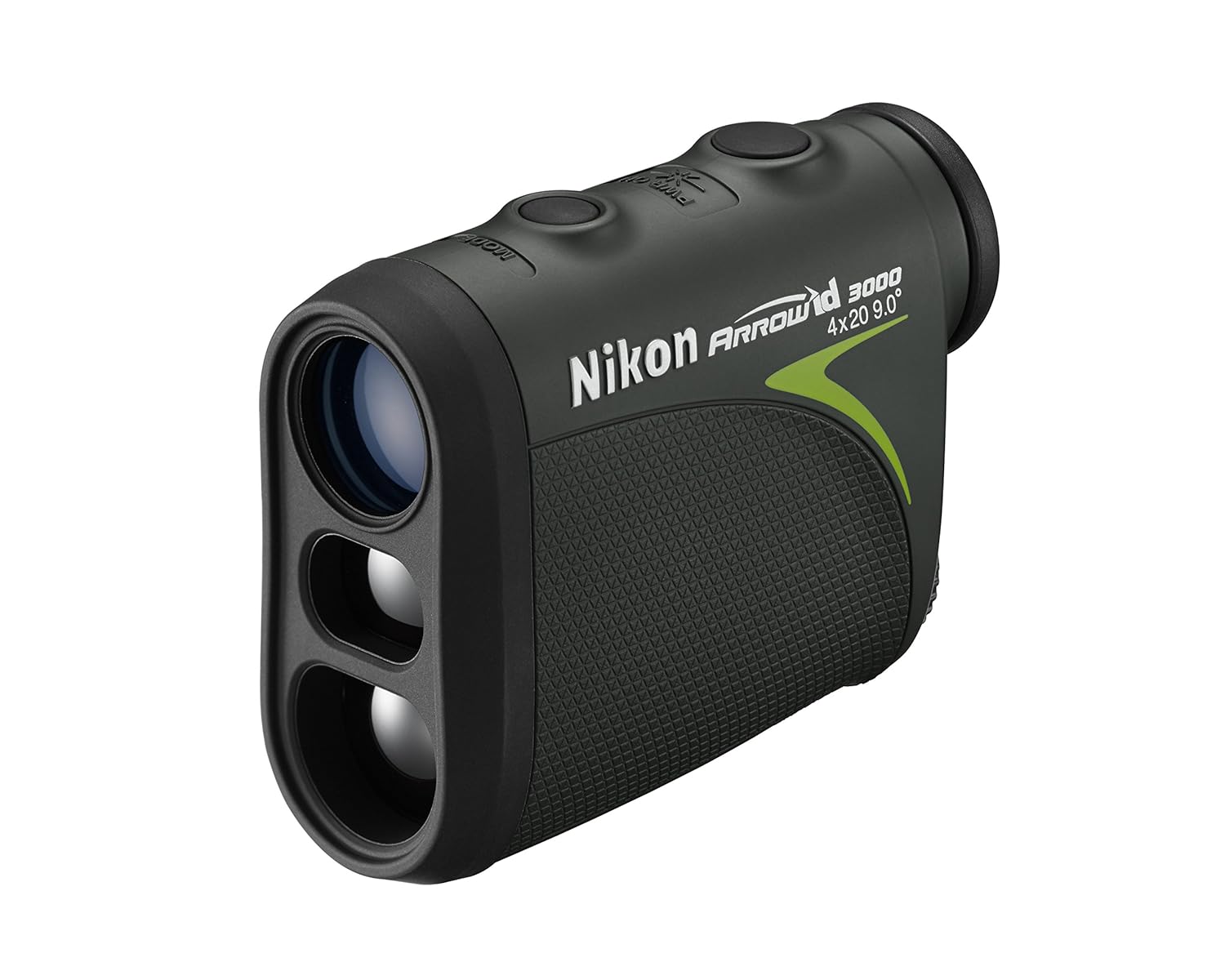








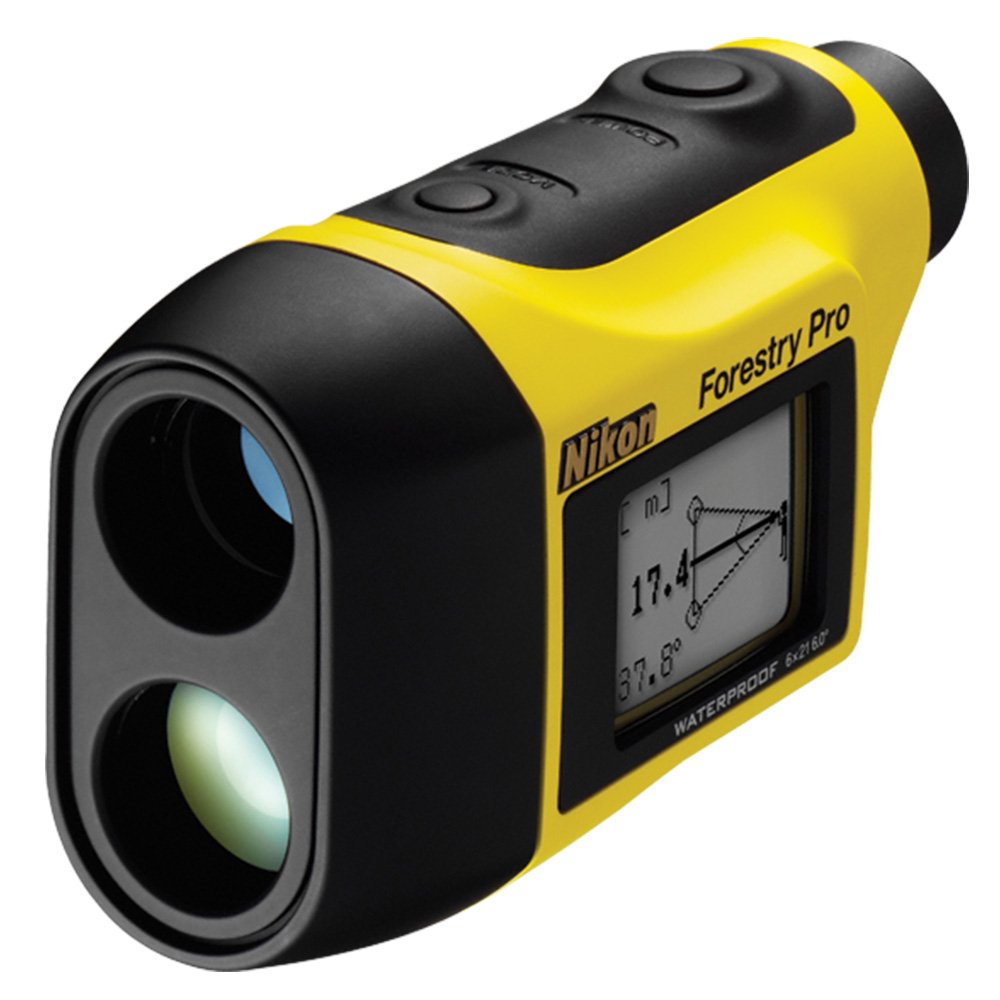




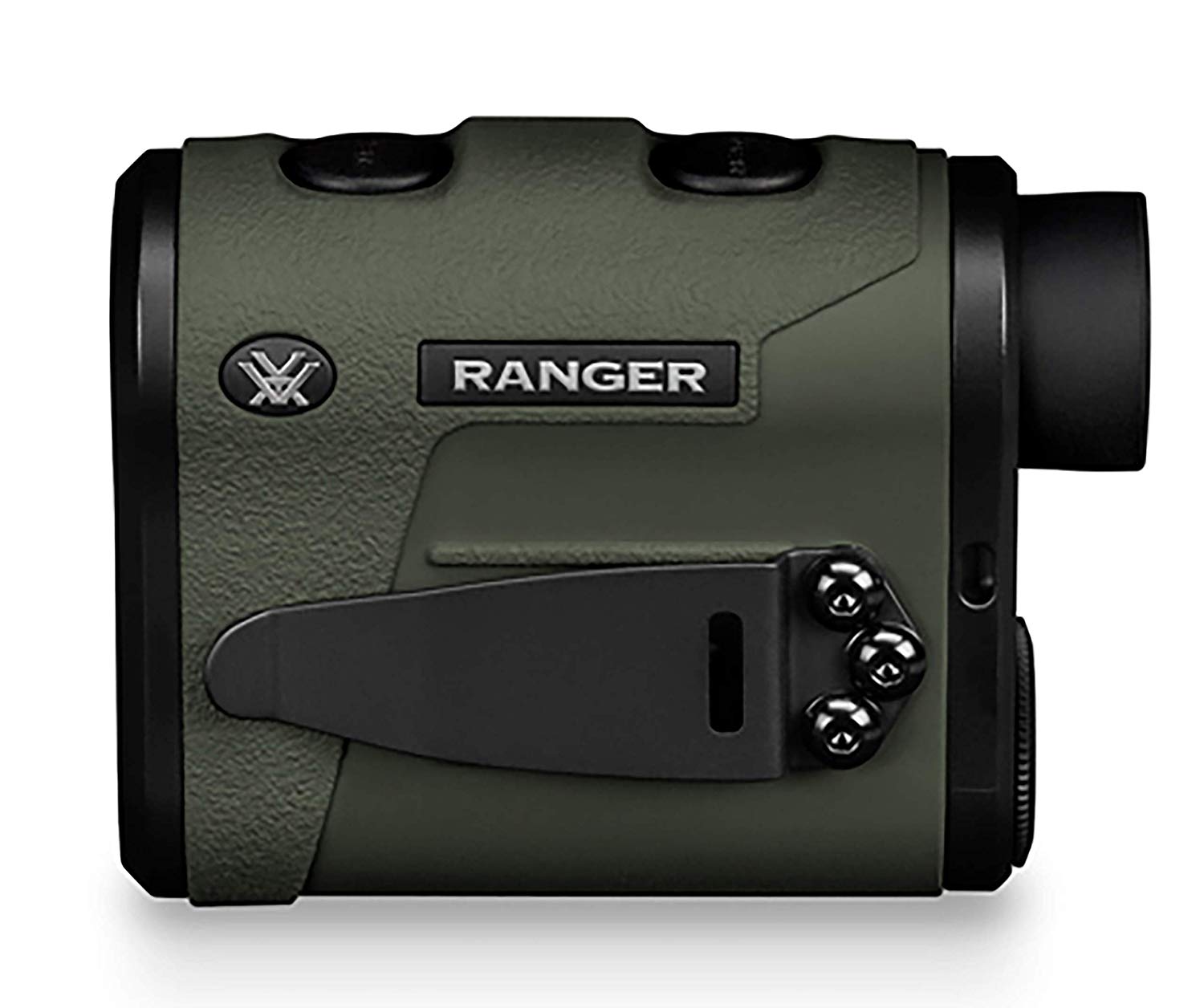

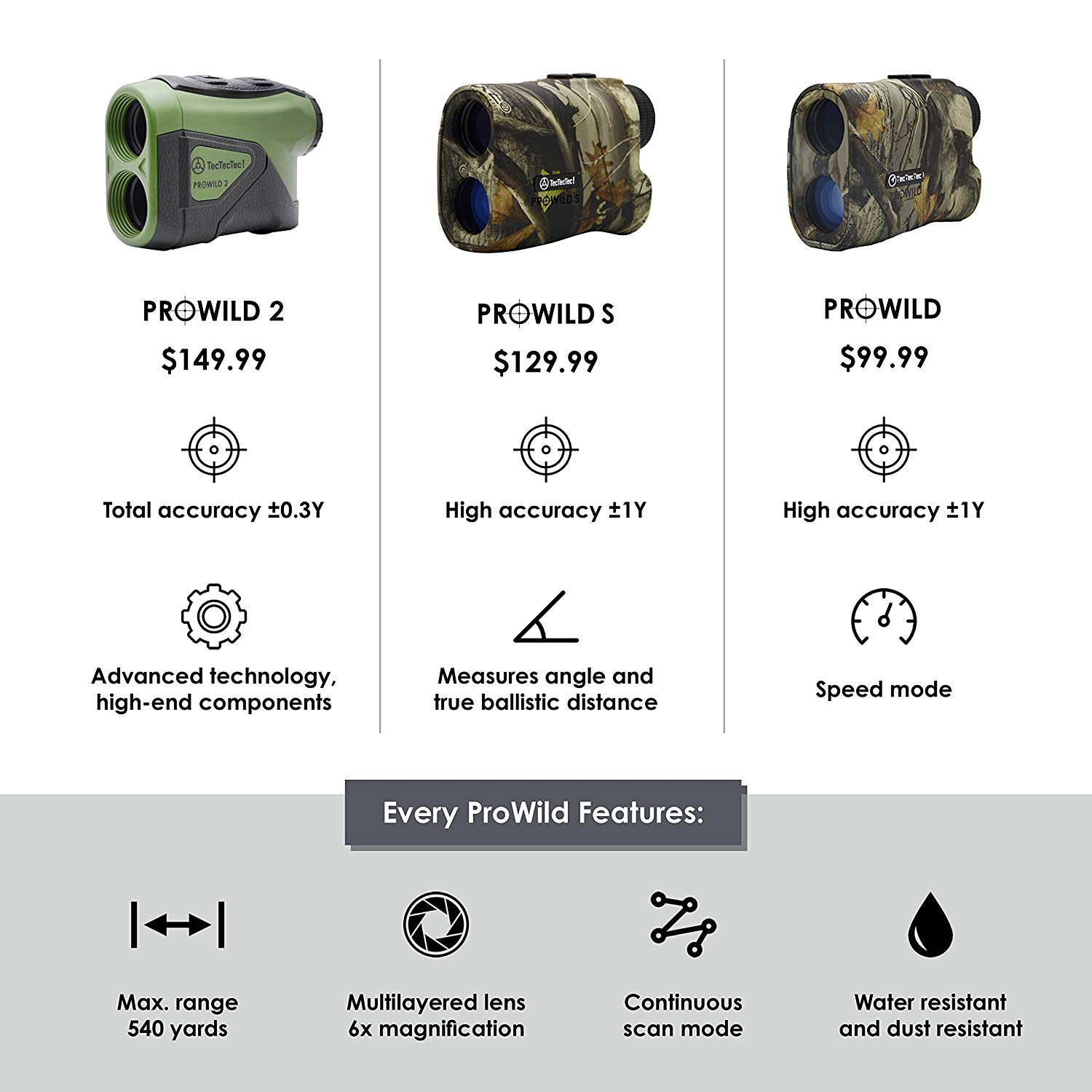
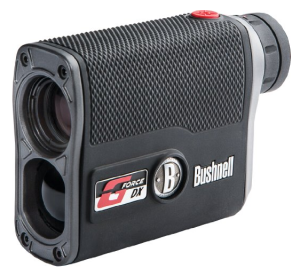 The G-Force DX ARC is built to last. Bushnell equips the rangefinder with a metal housing that holds up in rugged conditions. The rangefinder comes with rubber grips that provide comfort and slip-resistant handling in wet and cold conditions. Powered by a 3V lithium battery and weighing less than 8 ounces, the G-Force is light and easy to hold for long periods of time. It also fits easily into a pocket. With one-button operation and targeting, the G-Force is a cinch to use. With 6x optics, Vivid Display Technology, and an effective 5-1300 yard range, this rangefinder is clear and accurate. The V.D.T. yields peerless image clarity and great image contrast. With several light intensity settings, users can adjust the rangefinder to fit all outdoor lighting conditions.
The G-Force DX ARC is built to last. Bushnell equips the rangefinder with a metal housing that holds up in rugged conditions. The rangefinder comes with rubber grips that provide comfort and slip-resistant handling in wet and cold conditions. Powered by a 3V lithium battery and weighing less than 8 ounces, the G-Force is light and easy to hold for long periods of time. It also fits easily into a pocket. With one-button operation and targeting, the G-Force is a cinch to use. With 6x optics, Vivid Display Technology, and an effective 5-1300 yard range, this rangefinder is clear and accurate. The V.D.T. yields peerless image clarity and great image contrast. With several light intensity settings, users can adjust the rangefinder to fit all outdoor lighting conditions.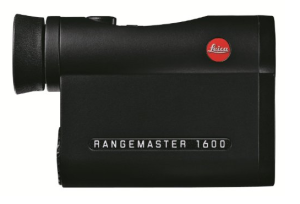 The
The 